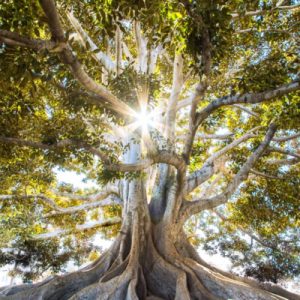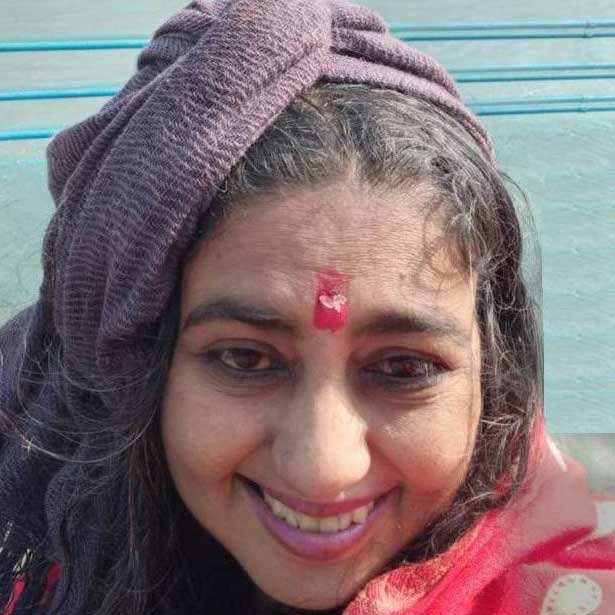An Introduction to Ayurveda
 Ayurveda is a traditional system of healing that was first recorded in India about 5,000 years ago. The sages of India wanted to alleviate the suffering of mankind and Ayurveda was considered the solution. The word Ayurveda comes from the Sanskrit words ayur (life) and veda (knowledge), making it the ‘science/knowledge of life’. Ayurveda employs diet, lifestyle, herbal medicines, and treatments as well as rituals to restore mental, physical, social and spiritual health.
Ayurveda is a traditional system of healing that was first recorded in India about 5,000 years ago. The sages of India wanted to alleviate the suffering of mankind and Ayurveda was considered the solution. The word Ayurveda comes from the Sanskrit words ayur (life) and veda (knowledge), making it the ‘science/knowledge of life’. Ayurveda employs diet, lifestyle, herbal medicines, and treatments as well as rituals to restore mental, physical, social and spiritual health.
Ayurveda’s fundamental principle is to live a life in harmony with nature. It sees the individual as a microcosm of the universe which is considered the macrocosm. Ayurveda is based on the core principle of non-violence, and it is through this principle that dis-ease is minimised for both the individual and the environment. Caring for the individual and environment, which are interconnected makes Ayurveda a holistic science.
The World’s Oldest Health Science: Ayurvedic texts dating back to at least 3,500 years ago even describe complex surgical procedures and instruments. Some procedures and instruments are still used today albeit in a highly refined state. Sage Sushruta who documented the process of surgery and the use of instruments is still revered by modern science as the Father of Surgery.
The origins of Ayurveda can be traced to about 6,000 BCE; they were passed from generation to generation as part of an oral tradition. While some concepts of Ayurveda have existed since the times of the Indus Valley Civilization, the first written form of Ayurveda evolved from the vedas – the large body of knowledge texts that are dated to 1500 – 1000 BCE.
There are 3 principal early texts on Ayurveda – the Charaka Samhita written by Charaka, the Sushruta Samhita written by Suśruta, and the Bhela Samhita written by Atreya Punarvasu. These texts describe theories on the etiology, pathogenesis and therapeutics for a range of diseases.
Healing of the individual and the environment: Ayurveda principally focuses on harmony and balance, not just within one’s body, but also between individuals and their environment. According to Ayurveda, every animate creature including humans have a complex system of body, mind, soul and life force known as prana.
Wellness and Disease: Ayurveda highlights the need for prevention of disease through proper diet, lifestyle and positivity of mind. It even goes so far as to say that the mind and stomach are the root of most diseases. Ayurveda does not focus on symptoms, but rather aims to diagnose and treat the cause of the imbalance that is responsible for the disease. Symptoms can be treated however they are considered as warning signs of an imbalance on a much deeper level. Ayurveda emphasizes that suppressing natural urges, such as yawning, belching, passing flatus etc is unhealthy and can lead to illness. It highlights the need for moderation in diet, sleep, and sexual intercourse.
Ayurvedic components of Life: All of this cosmic creation is considered to consist of the five great elements known as the PanchaMahaBhutas which are listed below in increasing order of density:
- Earth (Prithvi)
- Water (Aap/Jal)
- Fire (Agni)
- Air (Vayu)
- Ether (Aakash)
These elements combine in various ways to create the different forms we see on the planet. These have various characteristics that account for various faculties of human experience through our sensory organs. For instance, Agni (Fire) is associated with the eye and linked to the sense of sight, while Aap (Water) is associated with the tongue and linked to the sense of taste. Similarly, Prithvi (Earth) is associated with the nose and linked to the sense of smell, while Vayu (Air) is associated with the skin and is closely linked to the sense of touch. Akash (Space) is associated with the ear and linked to hearing.
The human body and all that exists within this universe is made up of these five elements which combine in different proportions to create diversity in form.
Theory Of Disease: In the human organisation, the dosha combination gives rise to different physical, emotional and psychological characteristics.
- Vata, comprises Vayu and Akash
- Pitta, comprises Agni and Aap
- Kapha, comprises Prithvi and Aap
As long as the innate balance of these doshas are maintained, the individual will experience good health, but if there is any imbalance, it makes the person susceptible to physical and mental illnesses.
The 8 Medical Branches of Ayurveda: The Ayurvedan system of medicine can be divided into eight branches. This is collectively known as Ashtanga which means eight limbs or parts. Ashtanga comprises the following:
- Kaya Chikitsa (General medicine)
Kayaa chikitsa is for the treatment of the mind body. It involves the use of herbal medicines and Ayurveda treatments - Bala Chikitsa (Pediatrics)
Bala chikitsa relates to the treatment of children, babies, and antenatal women. It includes information on common diseases and infections in children, as well as the causes and treatments for inadequate breast milk in new mothers. - Graha Chikitsa (Psychiatry)
Graha chikitsa relates to the study of mental afflictions that are believed to be caused by external spirits and negativity It deals with insanity, epilepsy, and psychosomatic diseases. Treatment approaches involve the use of rituals, medicines and ayurveda treatments. - Shalakya Tantra (ENT)
Shalakya tantra deals with conditions that affect the ears, nose, and throat. The medical texts enumerate various natural remedies and also describe surgeries to deal with more complex problems. 5. Shalya Tantra (Surgery) Shalya tantra deals with surgical procedures, especially for the removal of foreign bodies or growths. It describes surgical techniques used to treat conditions such as cataract, kidney stones, haemorrhoids and much more. This branch of treatment is rarely used today except in the treatment of haemorrhoids. - Agada Tantra (Toxicology)
Agada Tantra is the branch of Ayurveda that studies the effects and treatments of toxins and poisons. It covers toxins that are present in plants and animals, as well as the toxicity of certain minerals. Agada tantra also provides a list of foods that cannot be consumed together as they can produce toxins when they come in contact with each other. - Rasayana Chikitsa (Rejuvenation Therapy)
Rasayana deals with the aging process and methods of rejuvenation. It covers the various problems associated with aging, as well as methods to improve immunity, strengthen memory, and slow down the aging process. - Vajjikaran Chikitsa (Sexual dysfunction and virility)
Vajjikaran chikitsa deals with common sexual dysfunctions such as premature ejaculation, erectile dysfunction, and infertility. It also covers aphrodisiacs and methods to improve the health of the individual’s progeny. Treatments generally include diet and lifestyle modifications, various detoxification techniques, and herbal preparations.
Healing through Ayurveda:
Ayurveda views the physical, mental, and emotional aspects of human beings as a single unit that is influenced by the combination of elements in our systems which in turn are influenced by diet, lifestyle and environment. An imbalance in the elements causes the srotas (the channels in the body that transport fluids and energy) to become blocked, which leads to disease. One of the primary methods of treating and preventing illness is through cleansing the srotas. It is through the srotas that the Dhatus (the cells of the body) get nourished. The dhatus make up the structure of the body and should the dhatus be deprived of nourishment, disease results. Ayurveda emphasises that that any treatment will not have a permanent effect if the individual does not follow an appropriate diet and lifestyle suitable to his/her dosha imbalance.

